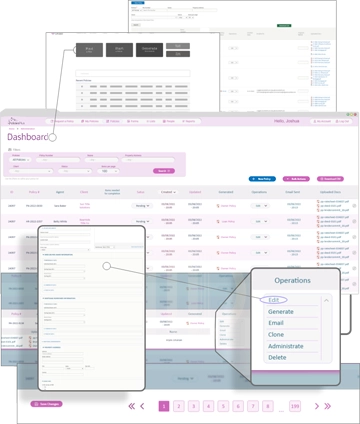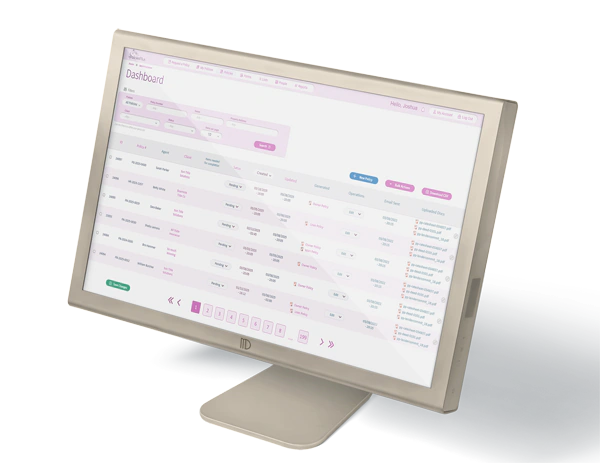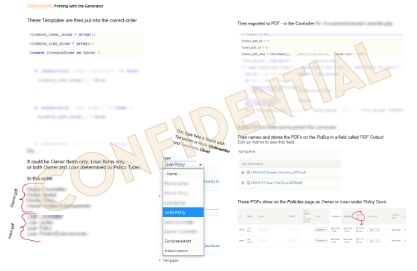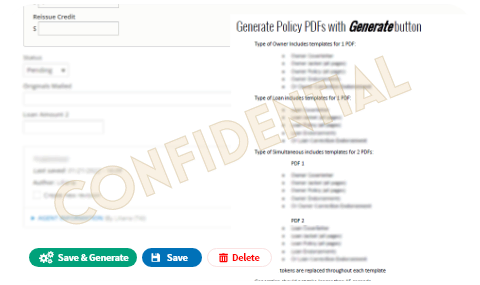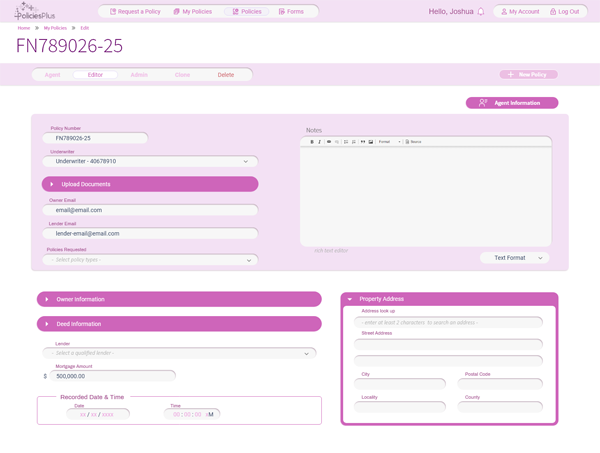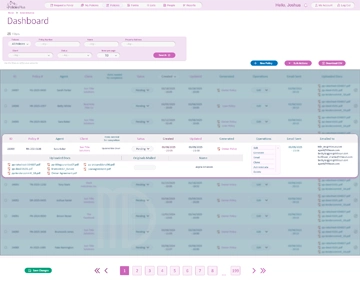Policies Plus Case Study
Streamlining workflows for efficiency and enhanced individual productivity.
The Project
Policies Plus, a title insurance company, struggled with inefficient manual processes - sorting through documents, retyping data from PDFs, and navigating inconsistent templates across multiple agencies. Without a centralized system, agents faced frequent errors, redundancies, and compliance risks.
I was brought in to design and develop a custom web application that streamlined the complex, multi-step workflow of generating title policies. The result was a universal, intuitive interface that adapts to varying policy types, agency needs, and document formats - reducing errors, improving speed, and bringing consistency to the entire operation.
The Challenge
To streamline policy creation, I first needed a deep understanding of the entire process—from data collection to final distribution.
What I uncovered was a highly complex, multi-step workflow with countless variations, each requiring its own specific set of data points.
I began by documenting every possible scenario and requirement, building a comprehensive inventory of data inputs.
From there, I identified reusable elements and organized them into a hierarchy of conditional fields.
The platform supports three user roles
- Agents, Editors, and Administrators -
Each with a tailored set of tools within the same cohesive interface:
- Agents can submit policy requests using a simplified form. Their agency data is preloaded via their user profile, minimizing redundant input and reducing submission time.
- Editors Editors receive automatic notifications for new requests and are guided through the relevant form options to complete the policy generation process.
- Administrators manage backend configuration, uploading new document templates using Microsoft Word—a familiar tool for the organization. They can also add and manage entities such as underwriters, agents, and lenders to populate dynamic form options for Editors.
To generate policies,
I built a document templating system that evaluates the user's inputs and selections, then assembles the appropriate Word-based templates.
Impact
The implementation of the Policies Plus web application transformed a fragmented, manual workflow into a streamlined, intelligent system:
- 10x productivity increase by automating redundant tasks and minimizing manual data entry.
- Drastically reduced errors and inconsistencies, improving compliance and client confidence.
- Shortened turnaround time for policy generation and delivery, accelerating internal workflows.
- Boosted user satisfaction with a clean, intuitive interface adopted quickly across all user roles.
- Improved scalability by centralizing data and creating reusable logic adaptable to new agencies and templates.
10X Increase in Productivity.
Manual tasks automated, freeing up time and reducing workload.


85% Fewer Errors
Data standardization and automation reduced inconsistencies and compliance risks.


75% Faster Turnaround
Streamlined workflows dramatically cut processing time.
Key Takeaway
- A deep understanding of complex workflows is essential to simplifying them effectively.
- Role-based systems ensure users get only what they need, when they need it—keeping interfaces clean and efficient.
- Familiar tools (like MS Word) can be integrated smartly to ease transitions and empower non-technical users.
- Designing for flexibility and reusability leads to sustainable systems that can grow with the business.


